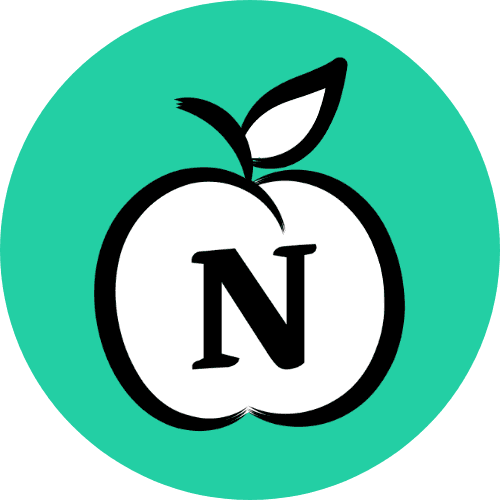Free Lesson Planner
Build your weekly lesson plan in Notion without the stress. Get it free!



Enhancing Lesson Planning with Transcribed Lectures
Enhancing Lesson Planning with Transcribed Lectures
Enhancing Lesson Planning with Transcribed Lectures

Article by
Milo
ESL Content Coordinator & Educator
ESL Content Coordinator & Educator
All Posts
Effective lesson planning is the backbone of successful teaching. As educational methods evolve and classroom technologies advance, teachers continually seek innovative tools to streamline their workflow and enrich student learning experiences.
One such tool gaining popularity is lecture transcription—turning spoken words into written text using modern transcription services. This article explores how transcribed lectures can transform lesson planning, save time, and support diverse learners, with practical strategies for teachers to integrate transcription into their routines.
Effective lesson planning is the backbone of successful teaching. As educational methods evolve and classroom technologies advance, teachers continually seek innovative tools to streamline their workflow and enrich student learning experiences.
One such tool gaining popularity is lecture transcription—turning spoken words into written text using modern transcription services. This article explores how transcribed lectures can transform lesson planning, save time, and support diverse learners, with practical strategies for teachers to integrate transcription into their routines.
Free Lesson Planner
Build your weekly lesson plan in Notion without the stress. Get it free!

Free Lesson Planner
Build your weekly lesson plan in Notion without the stress. Get it free!

Free Lesson Planner
Build your weekly lesson plan in Notion without the stress. Get it free!

The Evolving Landscape of Lesson Planning
Lesson planning is much more than filling out templates or jotting down bullet points. Today, teachers create dynamic, adaptable lessons that reflect curriculum standards, student needs, and real-time feedback. With growing expectations and often limited preparation time, educators look for ways to increase efficiency while maintaining the quality of their plans.
Technology has already revolutionized lesson planning through digital calendars, collaborative documents, and content-sharing platforms like Notion. However, integrating transcripts of classroom lectures or discussions represents another significant leap. When lectures are transcribed—whether delivered live or recorded—they become a powerful asset for both teachers and students.

Benefits of Using Transcribed Lectures in Lesson Planning
1. Saving Time and Reducing Redundancy
Transcribed lectures save teachers countless hours. Instead of rewatching videos or listening to recordings multiple times to find key points, educators can quickly search a transcript for specific terms, questions, or explanations. This allows for faster lesson adjustments, resource creation, and targeted interventions for students.
2. Supporting Differentiated Instruction
Not all students learn the same way. Having a transcript of lectures allows teachers to create differentiated materials with ease. For example, excerpts from transcripts can be transformed into guided notes, reading passages, or comprehension exercises for students who prefer textual learning or need extra support.
3. Enhancing Reflection and Professional Growth
Transcripts offer an opportunity for self-reflection. Teachers can analyze their instructional language, pacing, or the frequency of student participation. Reviewing these written records can inform future lesson planning, helping educators identify what worked and what needs improvement.
4. Providing Accessibility and Inclusivity
Students with hearing impairments, English language learners, or those who benefit from multiple modalities gain equal access when lessons are transcribed. Transcripts ensure that everyone can review content at their own pace, revisit complex topics, or catch up if they missed a class due to illness.
5. Facilitating Collaboration
Transcripts make it easier for teaching teams to collaborate. When planning across grade levels or subject areas, teachers can share portions of transcribed lessons, identify curricular connections, or co-create interdisciplinary projects. This transparency supports cohesive instruction and continuous improvement.
How to Get Started with Transcription
1. Recording Lectures Legally and Ethically
Before recording, check your school’s policies regarding classroom recordings and inform students if you plan to record lessons. Privacy and consent are paramount, especially when student voices are involved.
2. Choosing the Right Transcription Method
There are several ways to generate transcripts:
Manual Transcription: Time-consuming but highly accurate.
Speech-to-Text Software: Useful for quick drafts, though accuracy varies.
Professional Transcription Services: The most reliable option, offering high accuracy and quick turnaround times. For teachers handling multiple classes or large amounts of content, using fast transcription services can make the process efficient and manageable.
3. Integrating Transcripts into Notion
Platforms like Notion make it easy to organize and link transcribed lectures. You can create a dedicated page for each lesson, embed the transcript, and add related resources such as slides, assignments, or discussion questions. Teachers can also share these pages with students or colleagues as needed.

Practical Ways to Use Transcribed Lectures in Lesson Planning
1. Creating Lesson Summaries and Overviews
After a lesson, use the transcript to summarize key points and share them with students. This ensures that everyone is on the same page and provides a resource for revision or study. Summaries also help teachers quickly review previous content before introducing new material.
2. Building Resource Libraries
Store transcribed lectures in a digital library, categorized by topic, unit, or grade level. Over time, this becomes a valuable bank of content that teachers can draw from to design new lessons, create review materials, or respond to unexpected changes in the curriculum.
3. Developing Formative Assessments
Transcripts can reveal common misunderstandings or insightful student questions. Teachers can extract these moments and use them as prompts for formative assessments, classroom polls, or reflective journals, directly linking assessments to authentic classroom interactions.
4. Supporting Absent Students
When a student misses class, a transcribed lecture allows them to catch up efficiently. Instead of relying solely on classmates’ notes or incomplete summaries, absent students receive an accurate account of what was covered and discussed.
5. Informing Parent Communication
Teachers can reference transcripts when communicating with parents about student progress, classroom topics, or areas where a student may need extra help. This level of detail fosters stronger school-home partnerships.
Overcoming Common Challenges
1. Ensuring Transcript Accuracy
Automatic transcription tools have improved, but they’re not perfect. Always review and, if necessary, edit transcripts to correct misheard terms, especially in subjects with specialized vocabulary. Professional services are recommended when accuracy is critical.
2. Managing Data Privacy
When using recordings and transcripts, always protect student privacy. Avoid sharing sensitive or personally identifiable information outside approved channels. Many transcription services now comply with educational privacy standards, but always confirm before sharing files.
3. Avoiding Information Overload
While transcripts are helpful, too much information can overwhelm students or teachers. Focus on using transcripts for targeted purposes, such as clarifying key concepts, preparing for exams, or supporting differentiated instruction, rather than sharing every word spoken in class.
Integrating Transcription with Digital Lesson Planning Tools
Modern lesson planning platforms such as Notion allow teachers to merge transcribed content with multimedia resources, assignments, and collaborative notes. For example, after transcribing a science demonstration, teachers can:
Embed the video, transcript, and related handouts on a single Notion page.
Link to external resources, interactive quizzes, or follow-up readings.
Allow students to add comments or questions directly to the transcript, promoting deeper engagement.
This level of organization not only benefits teachers but also empowers students to take charge of their learning journey.
As you refine your lesson planning process, consider how integrating transcribed lectures could benefit your teaching and your students’ learning outcomes. With thoughtful implementation and a focus on accessibility, transcribed lectures can become a cornerstone of modern, effective education.
The Evolving Landscape of Lesson Planning
Lesson planning is much more than filling out templates or jotting down bullet points. Today, teachers create dynamic, adaptable lessons that reflect curriculum standards, student needs, and real-time feedback. With growing expectations and often limited preparation time, educators look for ways to increase efficiency while maintaining the quality of their plans.
Technology has already revolutionized lesson planning through digital calendars, collaborative documents, and content-sharing platforms like Notion. However, integrating transcripts of classroom lectures or discussions represents another significant leap. When lectures are transcribed—whether delivered live or recorded—they become a powerful asset for both teachers and students.

Benefits of Using Transcribed Lectures in Lesson Planning
1. Saving Time and Reducing Redundancy
Transcribed lectures save teachers countless hours. Instead of rewatching videos or listening to recordings multiple times to find key points, educators can quickly search a transcript for specific terms, questions, or explanations. This allows for faster lesson adjustments, resource creation, and targeted interventions for students.
2. Supporting Differentiated Instruction
Not all students learn the same way. Having a transcript of lectures allows teachers to create differentiated materials with ease. For example, excerpts from transcripts can be transformed into guided notes, reading passages, or comprehension exercises for students who prefer textual learning or need extra support.
3. Enhancing Reflection and Professional Growth
Transcripts offer an opportunity for self-reflection. Teachers can analyze their instructional language, pacing, or the frequency of student participation. Reviewing these written records can inform future lesson planning, helping educators identify what worked and what needs improvement.
4. Providing Accessibility and Inclusivity
Students with hearing impairments, English language learners, or those who benefit from multiple modalities gain equal access when lessons are transcribed. Transcripts ensure that everyone can review content at their own pace, revisit complex topics, or catch up if they missed a class due to illness.
5. Facilitating Collaboration
Transcripts make it easier for teaching teams to collaborate. When planning across grade levels or subject areas, teachers can share portions of transcribed lessons, identify curricular connections, or co-create interdisciplinary projects. This transparency supports cohesive instruction and continuous improvement.
How to Get Started with Transcription
1. Recording Lectures Legally and Ethically
Before recording, check your school’s policies regarding classroom recordings and inform students if you plan to record lessons. Privacy and consent are paramount, especially when student voices are involved.
2. Choosing the Right Transcription Method
There are several ways to generate transcripts:
Manual Transcription: Time-consuming but highly accurate.
Speech-to-Text Software: Useful for quick drafts, though accuracy varies.
Professional Transcription Services: The most reliable option, offering high accuracy and quick turnaround times. For teachers handling multiple classes or large amounts of content, using fast transcription services can make the process efficient and manageable.
3. Integrating Transcripts into Notion
Platforms like Notion make it easy to organize and link transcribed lectures. You can create a dedicated page for each lesson, embed the transcript, and add related resources such as slides, assignments, or discussion questions. Teachers can also share these pages with students or colleagues as needed.

Practical Ways to Use Transcribed Lectures in Lesson Planning
1. Creating Lesson Summaries and Overviews
After a lesson, use the transcript to summarize key points and share them with students. This ensures that everyone is on the same page and provides a resource for revision or study. Summaries also help teachers quickly review previous content before introducing new material.
2. Building Resource Libraries
Store transcribed lectures in a digital library, categorized by topic, unit, or grade level. Over time, this becomes a valuable bank of content that teachers can draw from to design new lessons, create review materials, or respond to unexpected changes in the curriculum.
3. Developing Formative Assessments
Transcripts can reveal common misunderstandings or insightful student questions. Teachers can extract these moments and use them as prompts for formative assessments, classroom polls, or reflective journals, directly linking assessments to authentic classroom interactions.
4. Supporting Absent Students
When a student misses class, a transcribed lecture allows them to catch up efficiently. Instead of relying solely on classmates’ notes or incomplete summaries, absent students receive an accurate account of what was covered and discussed.
5. Informing Parent Communication
Teachers can reference transcripts when communicating with parents about student progress, classroom topics, or areas where a student may need extra help. This level of detail fosters stronger school-home partnerships.
Overcoming Common Challenges
1. Ensuring Transcript Accuracy
Automatic transcription tools have improved, but they’re not perfect. Always review and, if necessary, edit transcripts to correct misheard terms, especially in subjects with specialized vocabulary. Professional services are recommended when accuracy is critical.
2. Managing Data Privacy
When using recordings and transcripts, always protect student privacy. Avoid sharing sensitive or personally identifiable information outside approved channels. Many transcription services now comply with educational privacy standards, but always confirm before sharing files.
3. Avoiding Information Overload
While transcripts are helpful, too much information can overwhelm students or teachers. Focus on using transcripts for targeted purposes, such as clarifying key concepts, preparing for exams, or supporting differentiated instruction, rather than sharing every word spoken in class.
Integrating Transcription with Digital Lesson Planning Tools
Modern lesson planning platforms such as Notion allow teachers to merge transcribed content with multimedia resources, assignments, and collaborative notes. For example, after transcribing a science demonstration, teachers can:
Embed the video, transcript, and related handouts on a single Notion page.
Link to external resources, interactive quizzes, or follow-up readings.
Allow students to add comments or questions directly to the transcript, promoting deeper engagement.
This level of organization not only benefits teachers but also empowers students to take charge of their learning journey.
As you refine your lesson planning process, consider how integrating transcribed lectures could benefit your teaching and your students’ learning outcomes. With thoughtful implementation and a focus on accessibility, transcribed lectures can become a cornerstone of modern, effective education.
Free Lesson Planner
Build your weekly lesson plan in Notion without the stress. Get it free!

Free Lesson Planner
Build your weekly lesson plan in Notion without the stress. Get it free!

Free Lesson Planner
Build your weekly lesson plan in Notion without the stress. Get it free!

Table of Contents
Free Lesson Planner
Build your weekly lesson plan in Notion without the stress. Get it free!
2025 Notion4Teachers. All Rights Reserved.
2025 Notion4Teachers. All Rights Reserved.
2025 Notion4Teachers. All Rights Reserved.
2025 Notion4Teachers. All Rights Reserved.







